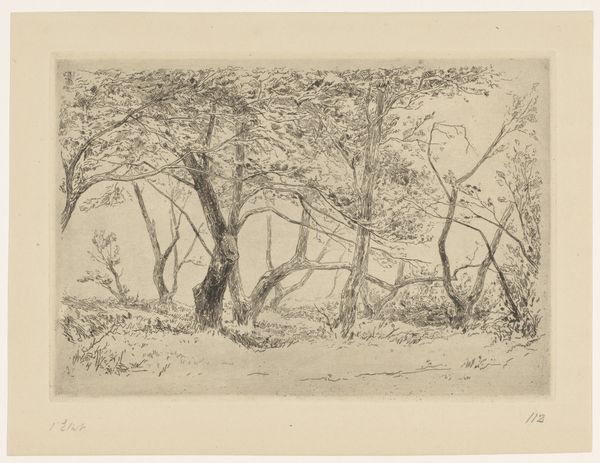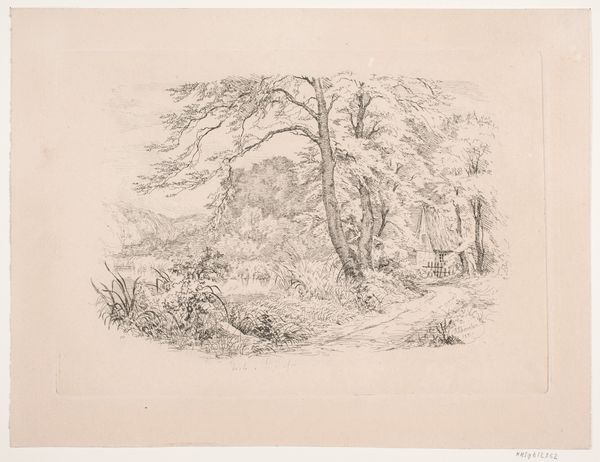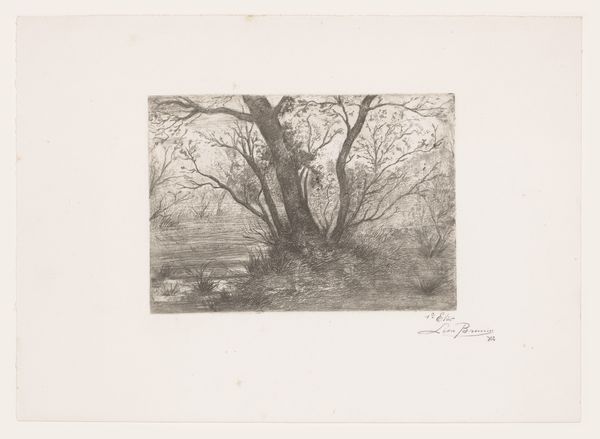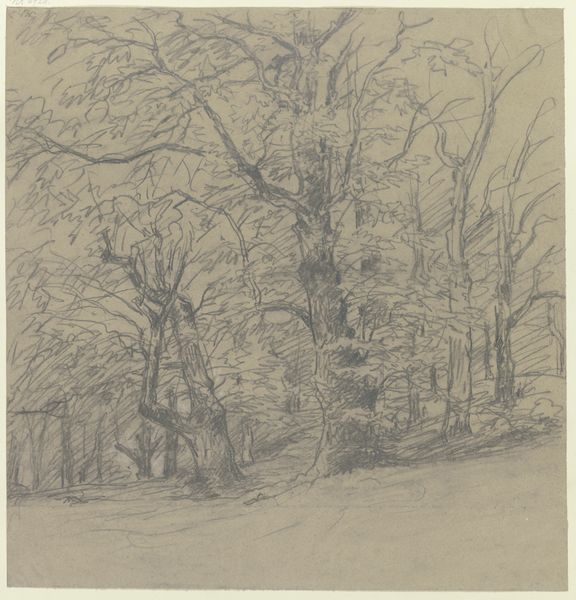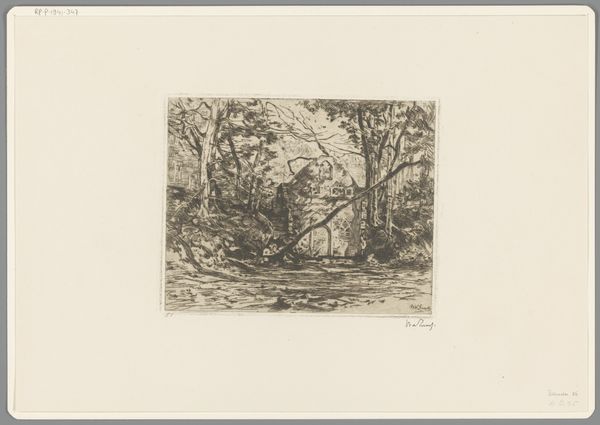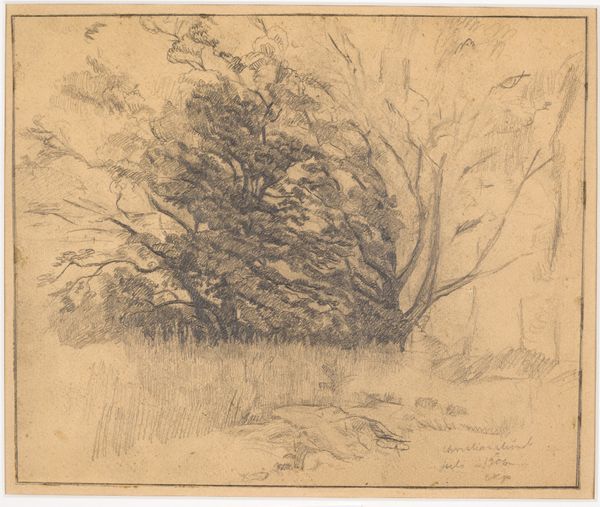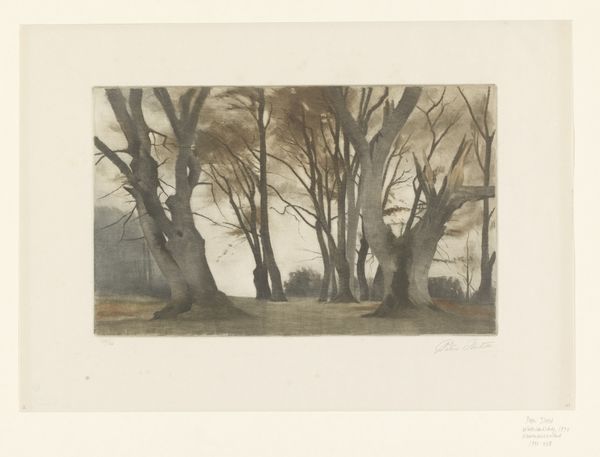
drawing, pencil
#
drawing
#
pencil sketch
#
landscape
#
pencil
#
realism
Dimensions: height 285 mm, width 384 mm
Copyright: Rijks Museum: Open Domain
Curator: Let’s take a moment to consider this evocative drawing titled "Boslandschap" by Jean-Louis Boussingault. Created sometime between 1893 and 1943, it employs pencil on paper to depict a forest scene. Editor: My immediate reaction is one of stark beauty. The skeletal trees reach out, their branches almost pleading against a bleak sky we can’t even see, casting dramatic shadows. It's melancholic, but there is still strength. Curator: It’s interesting you pick up on the melancholic aspect. Given the timeframe, it’s reasonable to consider how sociopolitical events might have filtered into Boussingault’s representation of nature, perhaps hinting at loss or resilience in the face of conflict. How do you interpret the road or path depicted, symbolically? Editor: For me, the path symbolizes a journey, but the darkness encroaching on either side creates an uneasy feeling. I sense themes of isolation and the search for direction within the subconscious. The branches are like grasping hands and remind me of stories of transformation. Curator: I appreciate how you connected that idea of isolation to a broader narrative; landscape art, particularly drawings like this, often become silent witnesses to shifting cultural attitudes toward nature. During periods of rapid industrialization, representations of unspoiled nature gained greater symbolic value. Did Boussingault consciously participate in the discussion of nature’s public value, though, or create it for its own sake? It's difficult to tell without additional context of the artist's production in his life. Editor: Maybe, or maybe it’s the raw honesty of unfiltered expression. Either way, the bare trees carry archetypal resonances of perseverance, adapting to harsh climates and surviving in diminished spaces. Curator: Yes, ultimately, even seemingly straightforward landscapes can unveil more profound insights into how we perceive our place in the world at different points in time. It encourages contemplation about the interaction of people and nature and the values tied to it. Editor: Absolutely. Images are rarely just "pictures"—they become repositories for cultural and personal narratives. "Boslandschap" beautifully captures that idea.
Comments
No comments
Be the first to comment and join the conversation on the ultimate creative platform.
